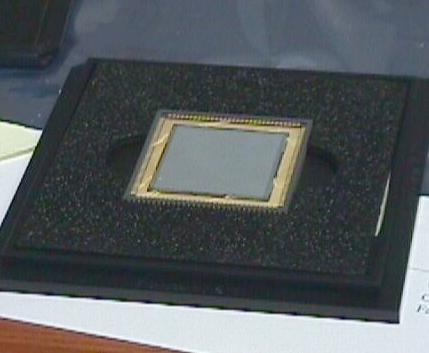 |
Bare multiplexer (MUX) from Raytheon. This unit is electrically
identical to the science grade detector, but has no infrared sensitive
layer. This unit was used to verify electrical connections and array
readout electrical operations. |
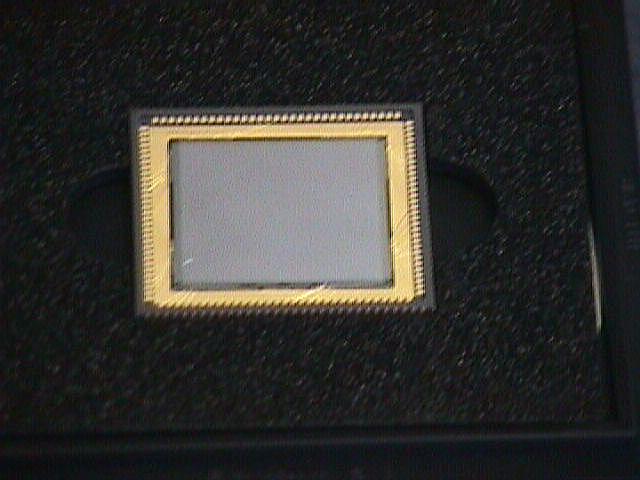 |
Zoom of MUX. The physical size is about 1.3x1.3" square. The
silicon, light sensitive, portion is gray, the mounting ceramic substrate
is gold plated, and the bonding pads are gold. A couple of the 0.001"
gold bond wires can just be seen connecting the silicon wafer to the
bond pads. |
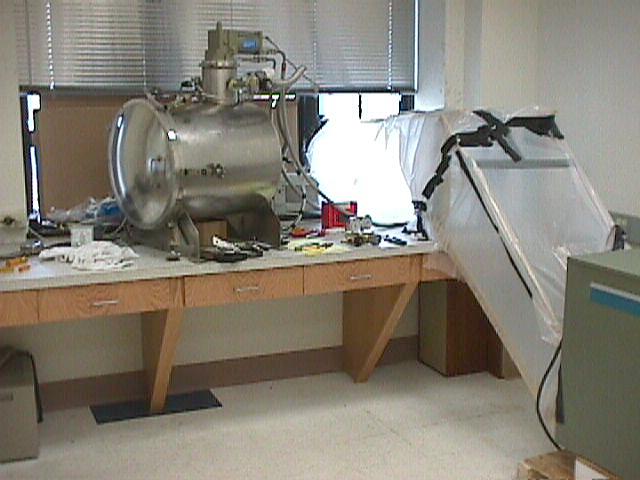 |
The monster duct. The air-cooled CTI 1020 helium compressor proved
to be a wonderful room warmer. Perhaps more than we wanted. We constructed
a large ducting system to try to move the hot air exiting the compressor
out the nearby window. It sort of worked, but ended up obstructing
the airflow from the compressor so much that we later removed the
ducting and just allowed the lab to creep up beyond 100 degrees F. |
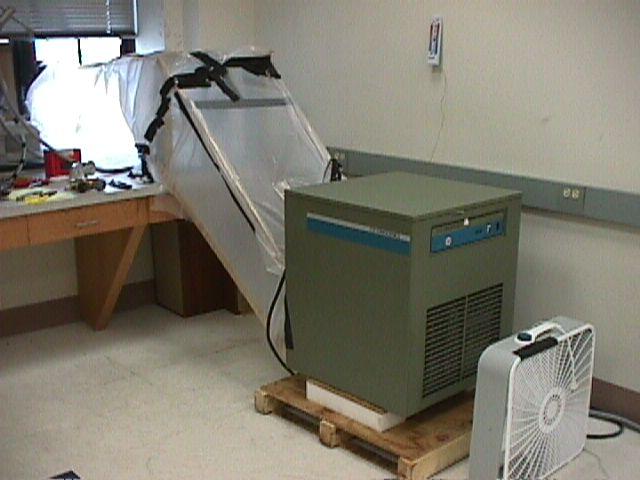 |
We tried augmenting the ducting with a fore fan and later an aft
fan to move air over the compressor cooling coils. This never quite
worked adequately, as the exit temperature stayed above 110 degrees
F. |
 |
Electronics test bench, while examining stepper motors and STP100
controllers. |
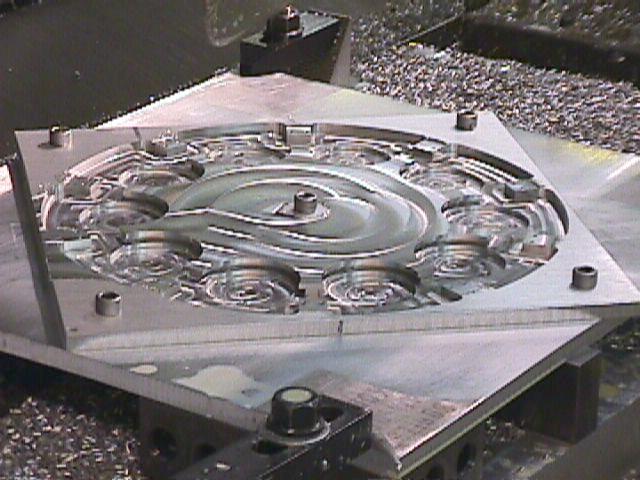 |
Filter wheel under construction in Miltronics mill at BU SIF. |
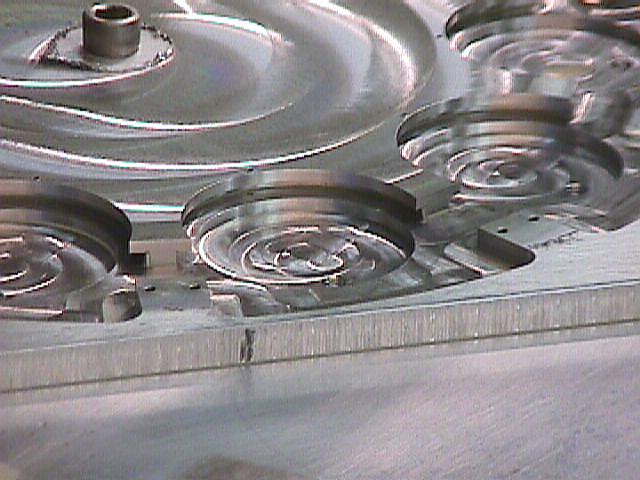 |
Filter wheel detail. The pockets cut for each filter location were
designed to accomodate and locate the outer lip for each filter cell.
In the bottom of each filter location is a set of holes to hold a
pin to locate the filter cell. |
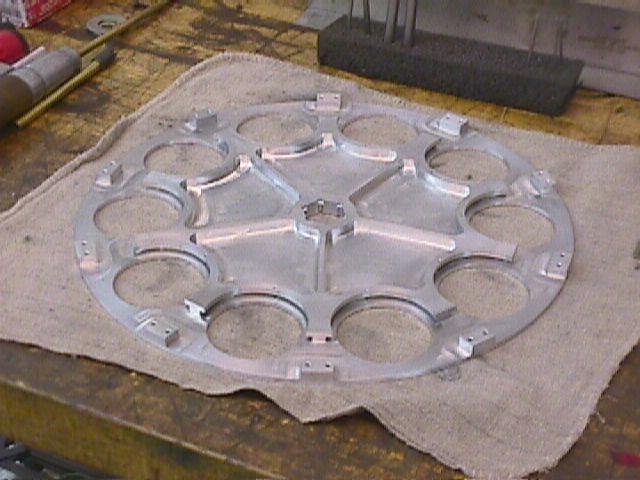 |
Completed filter wheel (this is FW3). Ten filter locations with
ten encoder positions are shown in this light-weighted wheel. The
outermost surface is only some 0.100" thick. After machining,
this wheel was sent out for thermal stress relief, bead blasting,
and black anodizing. |
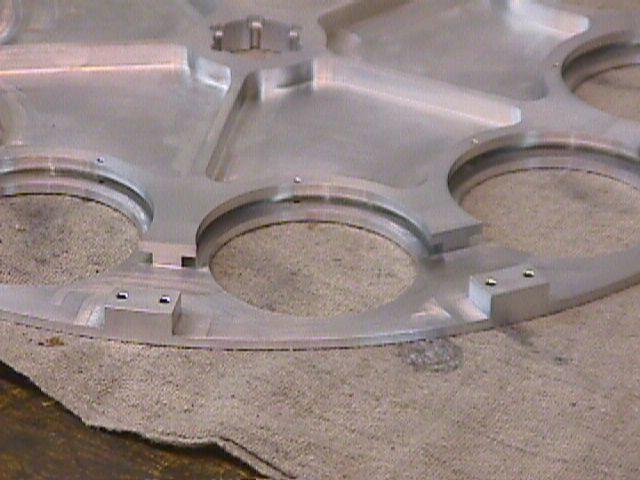 |
Detail, showing slot for filter cell lip, holes for locating pin,
and twin tapped holes on raised block to hold the encoder magnet block
for each filter. |
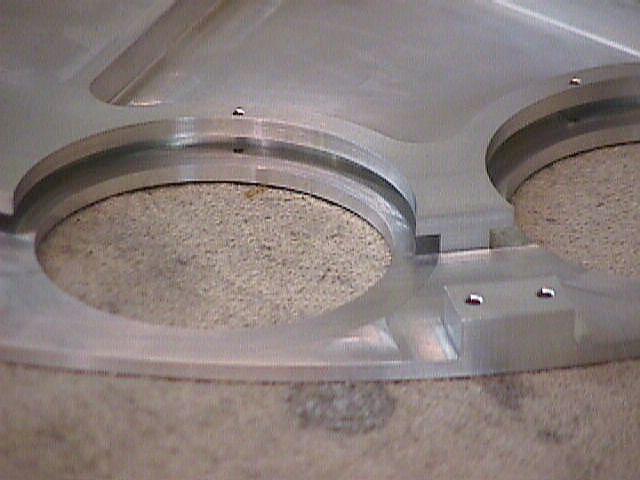 |
Closer detail to show slot and holes for alignment pin. |
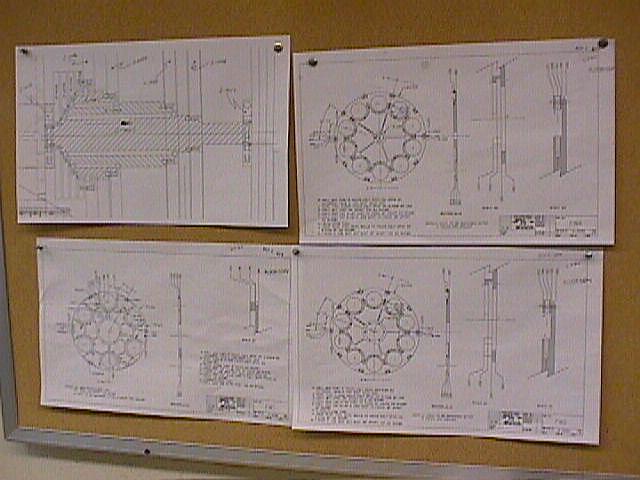 |
Filter wheel and filter wheel hub drawings on wall at BU SIF. Mimir
was one of the most complex and detailed projects fabricated in the
SIF. |
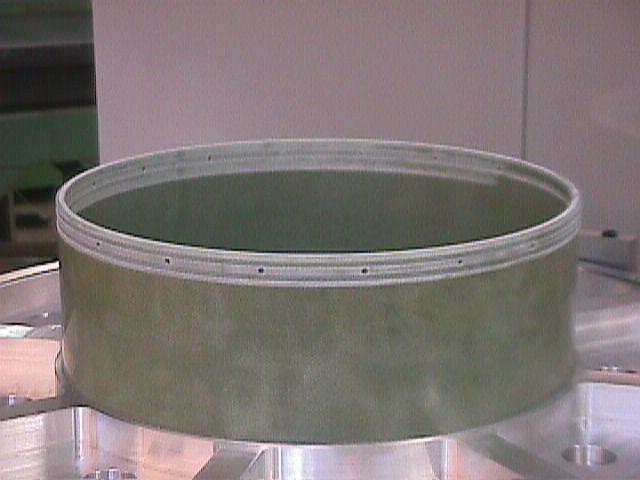 |
G10 collar, already epoxied into Big Ben warm bulkhead, now grooved
and drilled in preparation for being epoxied into cold bulkhead. |
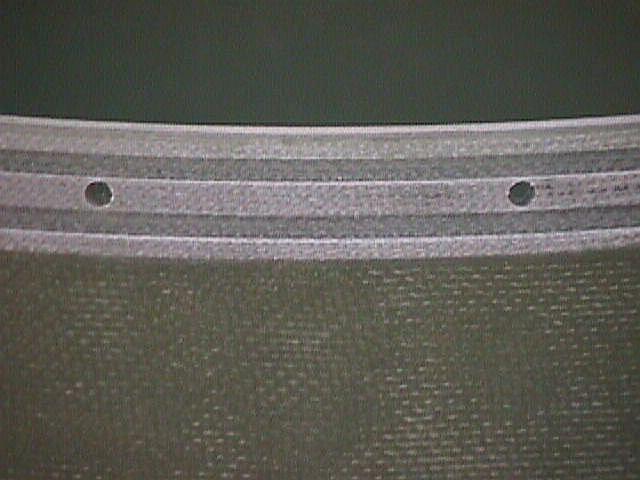 |
Detail of G10 collar, showing grooves and holes. Both were designed
to capture/flow epoxy around and inside the cold bulkhead groove to
ensure excellent adhesion and high mechanical strength. |
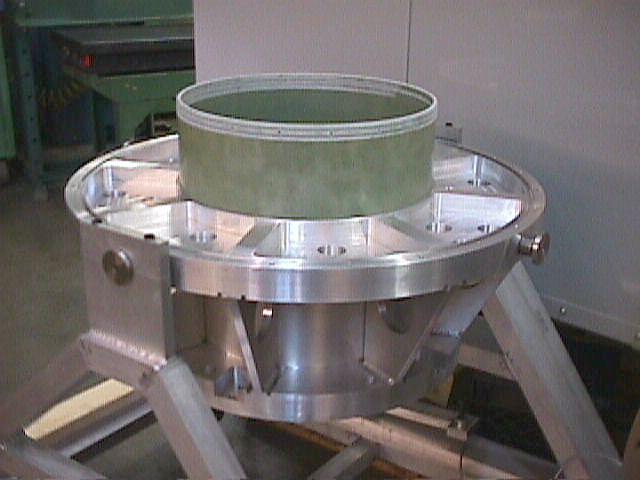 |
Big Ben and G10 collar being prepped for epoxying to the cold bulkhead. |
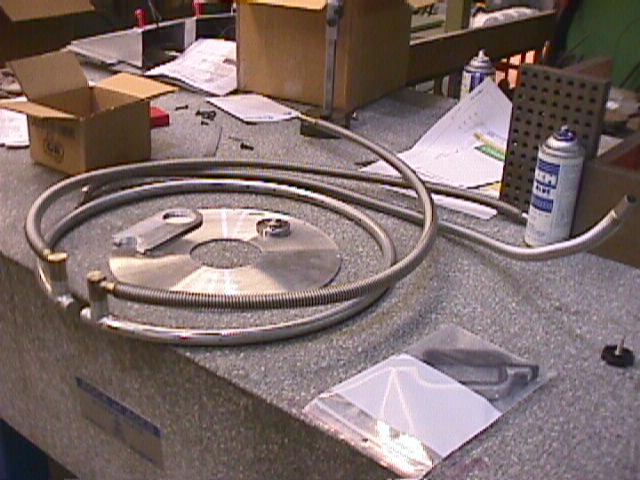 |
LN2 precool ring and stainless steel corrigated hoses. The ring
was an aluminum ring, filled with ball bearings. The aluminum to stainless
transition pieces were vendor supplied, spun pieces. These were welded
into the aluminum ring and into the baffle tubes. |
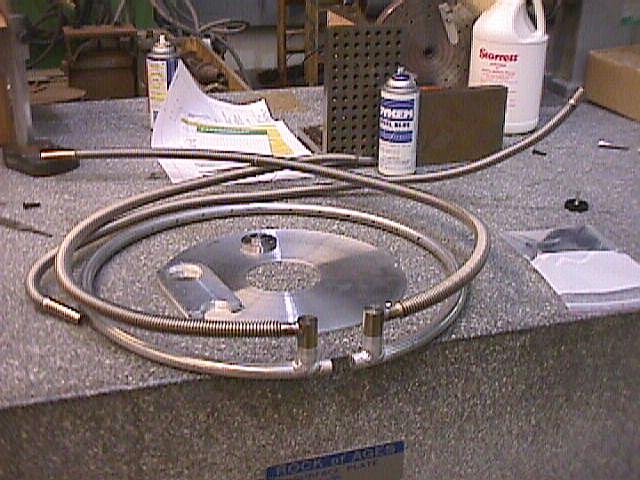 |
Another view. Note that the LN2 ring is split and the transitions
attached at the split ends. |
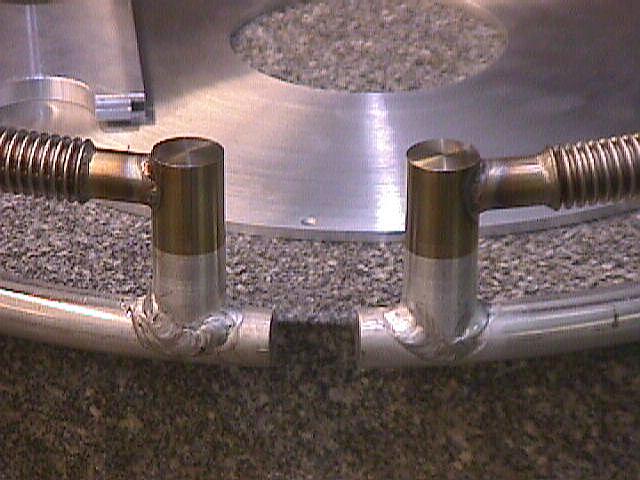 |
Detail, showing the aluminum to stainless steel transition pieces
and the gap in the aluminum ring. |
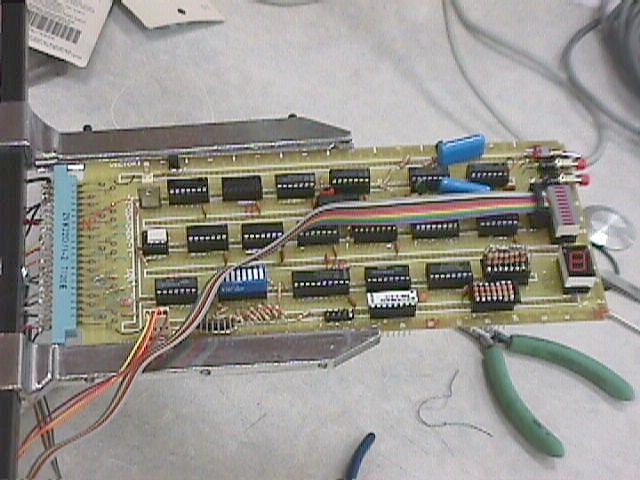 |
Wire-wrap prototype I/O board to host the STP100 stepper motor controller
board and provide more motor/sensor control |
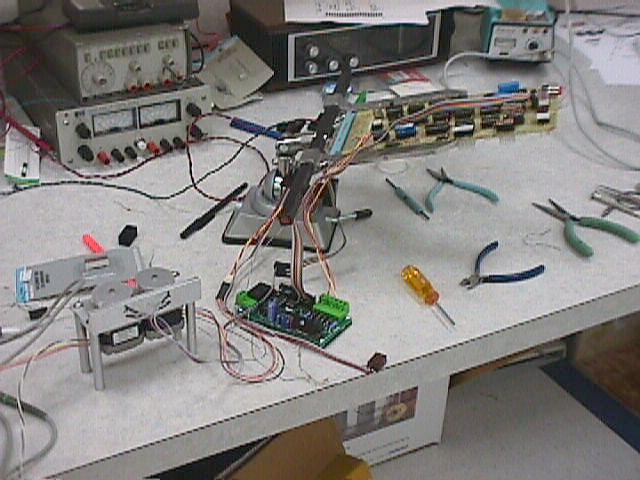 |
Testing the prototype I/O board, with STP100 stepper motor driver
board, and stepper motor jig (as configured for the cryovac chamber). |


















